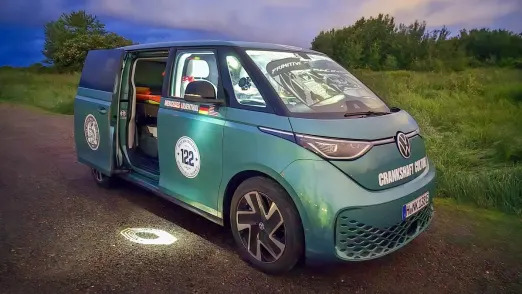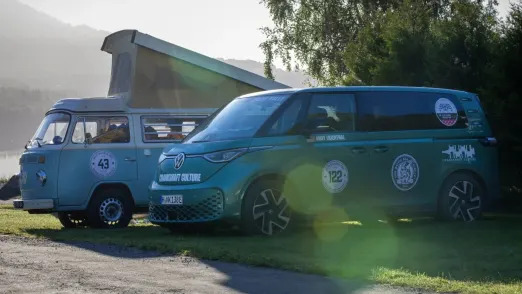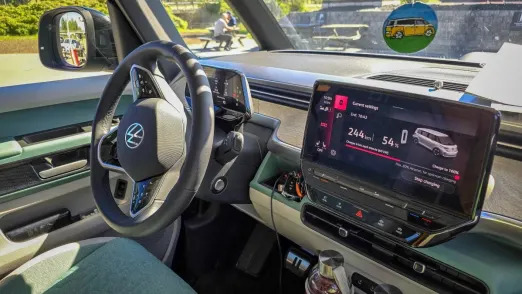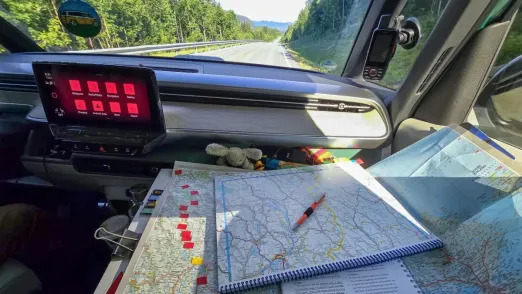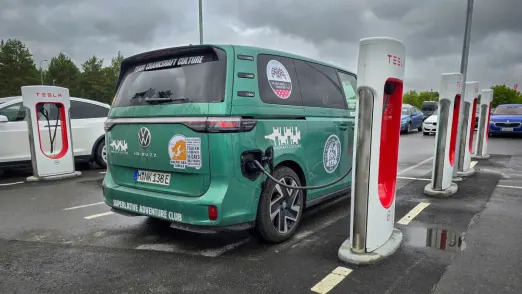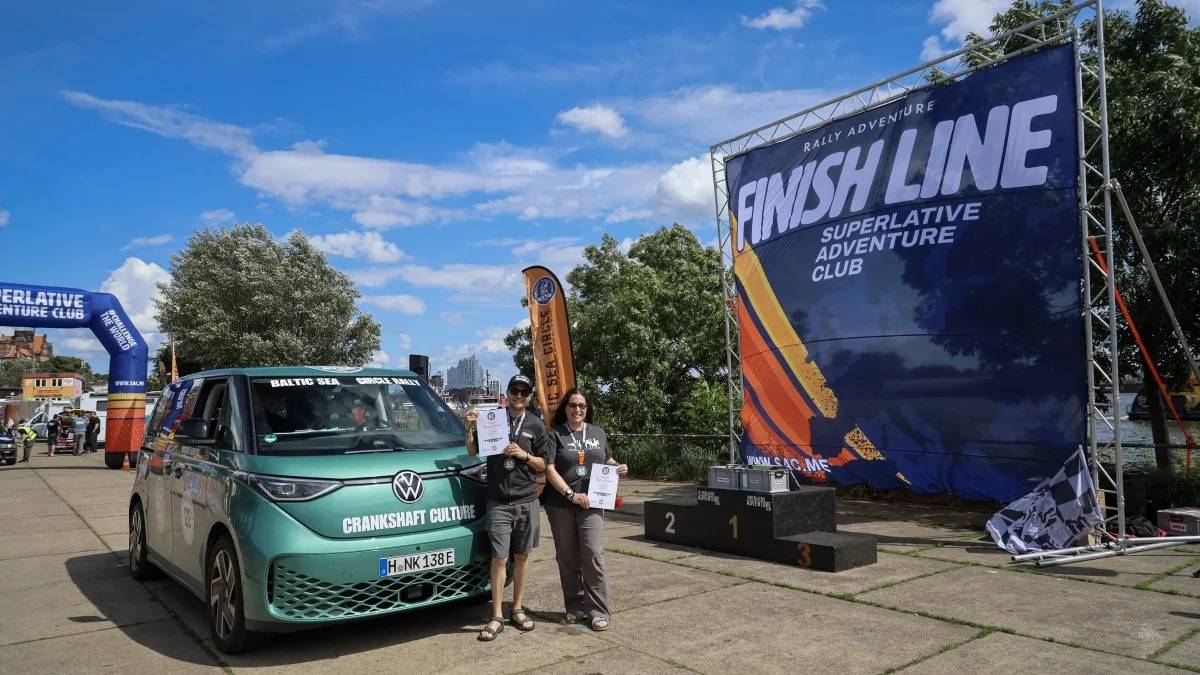Completing a 16-day, nine-country rally around the Baltic Sea is hard enough. Doing it in an all-electric car seems like, well, madness. Right? Well, that’s exactly what my husband and I did, tackling the 2024 Baltic Sea Circle Rally in a European-spec short wheelbase Volkswagen ID. Buzz Pro EV.
The Baltic Sea Circle Rally is the brainchild of Hamburg, Germany-based rally organization Superlative Adventure Club (SAC). Run since 2011, the Baltic Sea Circle Rally is part fun run and part competition, touring through backroads with no GPS and only paper maps, packed with a massive sense of adventure as teams camped along the way.
Each year, the Baltic Circle Sea Rally (both summer and winter iterations) asks teams to raise at least 500 euros (approximately $540 USD) for their favorite charity. We chose to support The Jessi Combs Foundation – the charity named in honor of the late racer and TV personality, which educates and supports young women seeking careers in automotive trades and similar fields. Along with several generous donors, we raised $3,239 USD (over 2,985 euros) for the nonprofit.
Unlike some competitions in North America, like the Alcan 5000 Rally, the Baltic Sea Circle Rally is an adventure rally where unique daily challenges and off-the-wall missions created an exciting journey around the Baltic Sea while basking in the midnight sun. There were 140 teams entered in this year’s Baltic Sea Circle Rally, with all but one team not from Europe or its nearby regions: us. My husband and I traveled from Oregon to Germany to compete. We were also the only team piloting an all-electric vehicle this year — an incredible feat given we needed to travel 5,000 miles through nine countries.

Where did the rally take us?
Some rallies, like time-speed-distance competitions, are based on precision and particular routes. But the Baltic Sea Circle Rally has a suggested course that’s noted in a thick spiral-bound roadbook. It can loosely be followed, as long as you cross the finish line. Or, as some teams did, you could massively deviate from the course or head home early if you chose.
Teams started in northern Germany and worked their way through the eight of the nine countries that meet the Baltic Sea, plus Norway. Over the 16-day duration, June 22 through July 7, we drove a clockwise route through Germany, Denmark, Sweden, Norway, Finland, Estonia, Latvia, Lithuania and Poland. Despite the name, we didn’t actually spend much time near the Baltic Sea.
That was especially true when we achieved one of our personal goals: drive to the northernmost point in all of Europe: Nordkapp, Norway, aka the North Cape. This special place beckons adventurers with its steep cliffs and iconic globe sculpture located at 71°10′21″N 25°47′04″E. Nordkapp is just 1,306 miles from the North Pole and is considered the mid-point of the Baltic Circle Sea Rally.
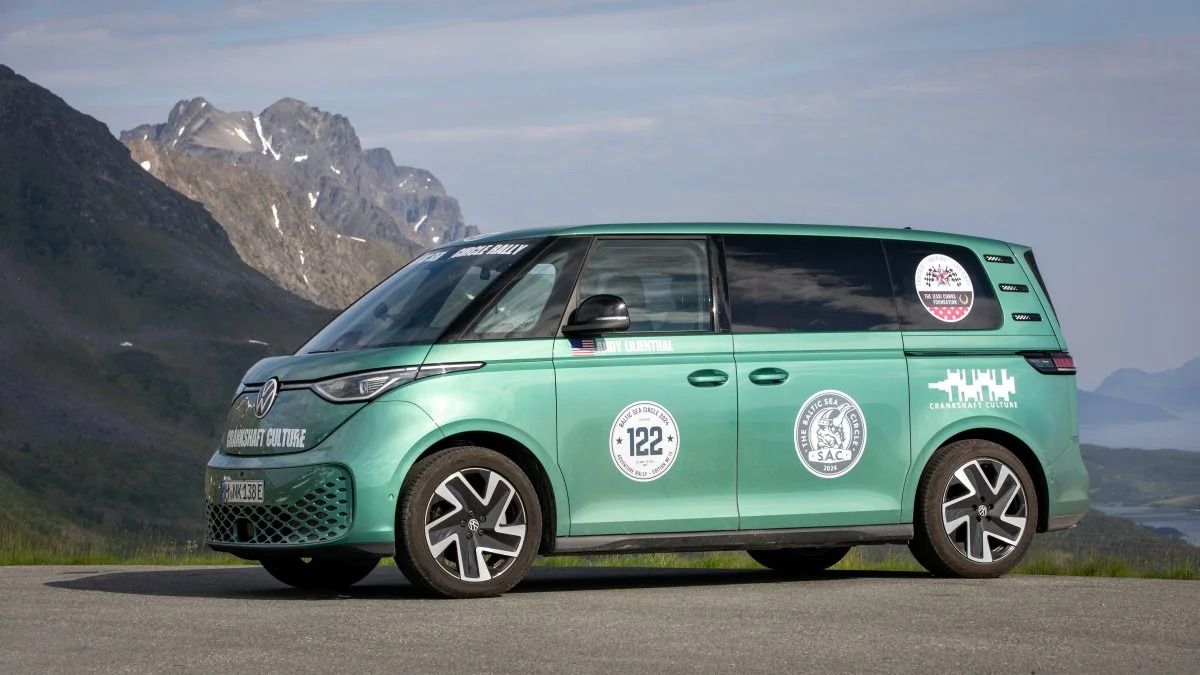
A big green box with a Ququq BusBox
Our 2024 Volkswagen ID. Buzz Pro arrived sporting a very cool Bay Leaf Green paint job with a matching Jade Green/Mistral two-tone interior. Unlike the minivan-like three-row ID. Buzz that will eventually come to the United States, this was the Euro-spec, short-wheelbase two-row model that’s
Our ID. Buzz Pro van also featured a Ququq BusBox-4 camping system for sleeping, cooking, and storing gear — an extra installed for the rally. This unique interior camp unit is easy to set up in any ID. Buzz. Simply fold the rear seats down, secure the Ququq camp box in place, and voilà, the ID. Buzz turns into a camper van. The system works super-well; it’s well built, thoughtfully designed, sturdy and easy to use.
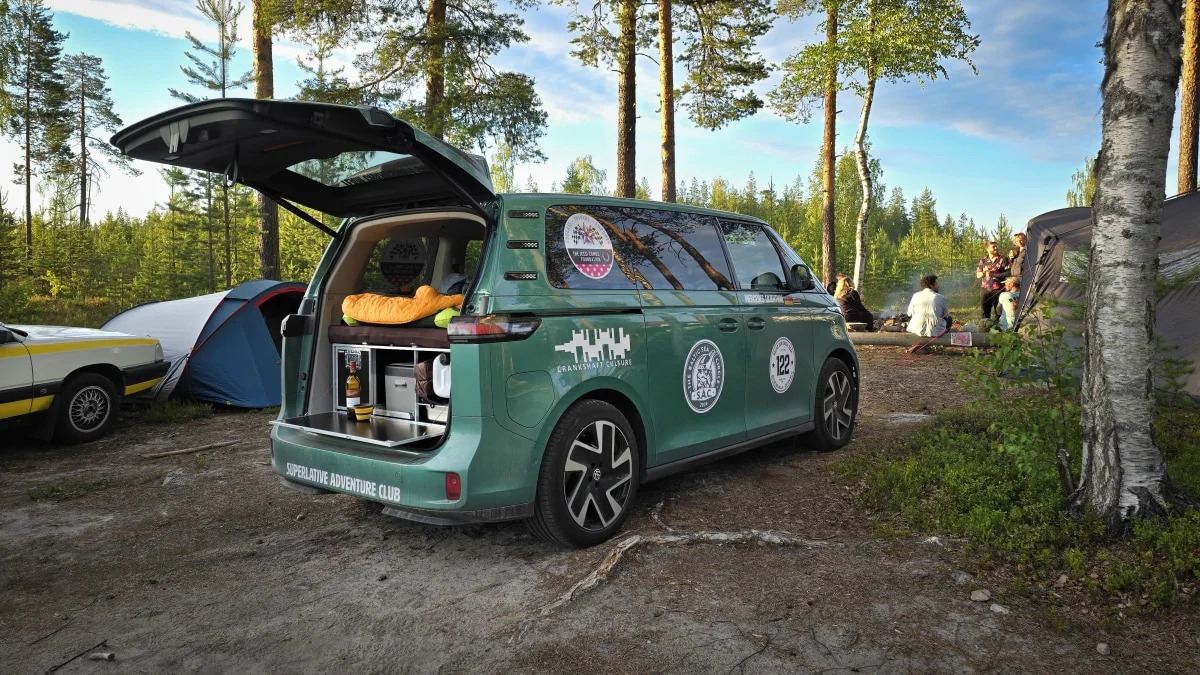
Volkswagen’s volts
This Euro-spec ID. Buzz has a single rear motor that generates 201 HP and 229 pound-feet of torque, which is the same output as the ID.4
As this was an earlier-built 2024 ID. Buzz, that 82-kWh battery was said to achieve 250 to 262 miles of range, but that’s on the uber-optimistic WLTP European testing cycle. Here’s what it actually managed. After 36 charges and extensive statistical analysis, our ID. Buzz Pro netted a wide range of total kilometers after charging to 100%. On the high end, we actually surpassed that WLTP estimate. For instance, we charged in Molde, Norway, arriving with 57% and 272 kilometers (169 miles) of charge left. We had a lot of remote traveling coming up, so we decided to top off. After 38 minutes to reach 100% charge, we bumped our ID. Buzz up to an impressive 467 km (290 miles). We also managed two other charges that topped over 440

